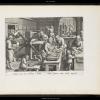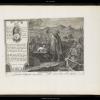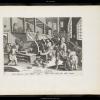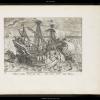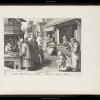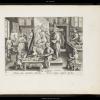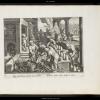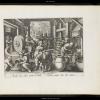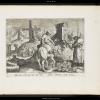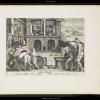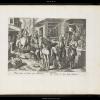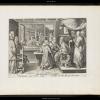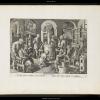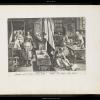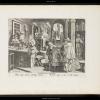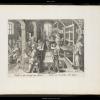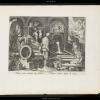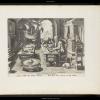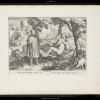Nova reperta: title page
Commentary
Description: This is the title page of a series of twenty engravings illustrating ‘recent inventions and discoveries’, mostly technological inventions unknown in antiquity. It therefore represents graphic evidence of Europeans’ consciousness of living in a new historical era, defined by technological advances on antiquity. The title page also serves as a visual table of contents of the series: the sequence in which the inventions are numbered here (with Roman numerals in the image and Arabic numerals in the legend below it) corresponds to the order of the engravings which follow. The four inventions pictured most prominently on this title page – America, the magnetic compass, gunpowder, and printing – are also the first four discoveries treated in the series of engravings.
Since the mid-1400s, several 'catalogues of inventions' were produced; even though they were supposed to show the 'progress' of the moderns over the ancients, they were modelled on an ancient example, that of Pliny the Elder's Natural History. The most famous early example of such a modern catalogue is Polydore Vergil's On Discovery (De inventoribus rerum,1499). In the 1500s, these catalogues were also produced in visual form.
The chief 'invention' that concerns Stradanus is the discovery of America, which features in plate 1 and is pointed to by a young 'Amazon' woman (who can be associated with the female leader portrayed in plate 1). It is, of course, not an invention in the modern sense, but 'inventio' in Latin meant finding or discovering something. In the left emblem, Stradanus credits Christopher Columbus with the discovery of America (Christophor. Columbus Genuens invenit) and Amerigo Vespucci with the recognition of the discovery and the naming of the new continent (Americus Vespuccius Florentinus retector et denominator). Stradanus favours Vespucci, who was a Florentine (his adoptive city), and shows him rather than Columbus in plate 1. The Florentine theme is also evident in his depiction of the Southern Cross in the title: this was apparently described by Dante in his Divina Commedia and identified by Vespucci according to a letter he wrote to the Medici Duke. The four chief inventions of America, compass, gunpowder and printing are otherwise set in a Southern Cross arrangement on the frontispiece. Is Stradanus perhaps suggesting that Florence is the capital city of new discoveries?
Credits: Howard Hotson (March 2017) and Georgiana D. Hedesan (November 2021).
Literature: Alice Bonner McGinty, 'Stradanus: His Role in the Visual Communications of Renaissance Discoveries, Technologies, and Values' (PhD dissertation, Tufts University, 1974), Uta Bernsmeier, ‘Die Nova Reperta des Jan van der Straet : ein Beitrag zur Problemgeschichte der Entdeckungen und Erfindungen im 16. Jahrhundert’ (PhD dissertation, Universität Hamburg, 1986); F W H Hollstein, The New Hollstein: Dutch and Flemish etchings, engravings and woodcuts 1450-1700 (Amsterdam, 1993); Alessandra Baroni Vannucci, Jan van der Straet, detto Giovanni Stradano, flandrus pictor et inventor (Milan, 1997); Jean-Claude Margolin, 'À propos des Nova reperta de Stradan', in: Esthétiques de la nouveauté à la Renaissance, eds. Franck Lessay and Francois Laroque (Paris: Presses Sorbonne Nouvelle, 2001), open access, Susan Dackerman et al.. Prints and the Pursuit of Knowledge in Early Modern Europe (New Haven and London, 2011), cat.no.1; A. Baroni and M. Sellink, Stradanus 1523-1605: Court artist of the Medici [exhibition catalogue, Groeningemuseum Brugge, 2008-2009] (Turnhout, 2012), pp. 300-306, cat. no. 99-107
Title: Nova Reperta (New Discoveries / Inventions)
Object type: engraved title page
Producers: indicated lettering in margins below images 'Aloysio Alamannio Florno.’ (commissioned by the Alamanni family); ‘I. Strad. Invent. DD. / 'Ioan. Stradanus invent.’ (designed by Jan van der Straet); 10 plates engraved by Philips Galle, and 10 by Hans Collaert; ‘Theodorus Galle excudit Antuerpiae' (originally published by Philips Galle; this edition later published by his son, Theodor Galle). See further in Hollstein (below).
Place of production: Antwerp
Date of production: c. 1590
Dimensions: 206 mm high, 266 mm wide
Source: Bodleian Library, shelfmark Don. b.8 (1)

